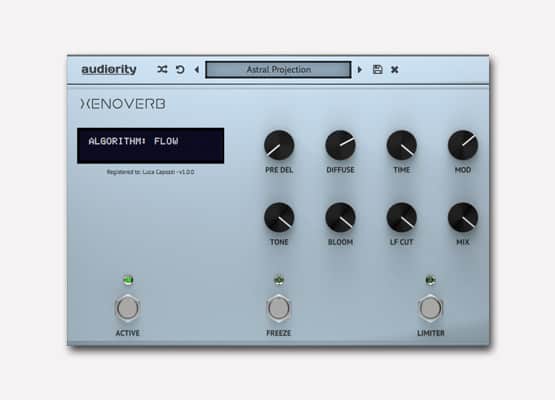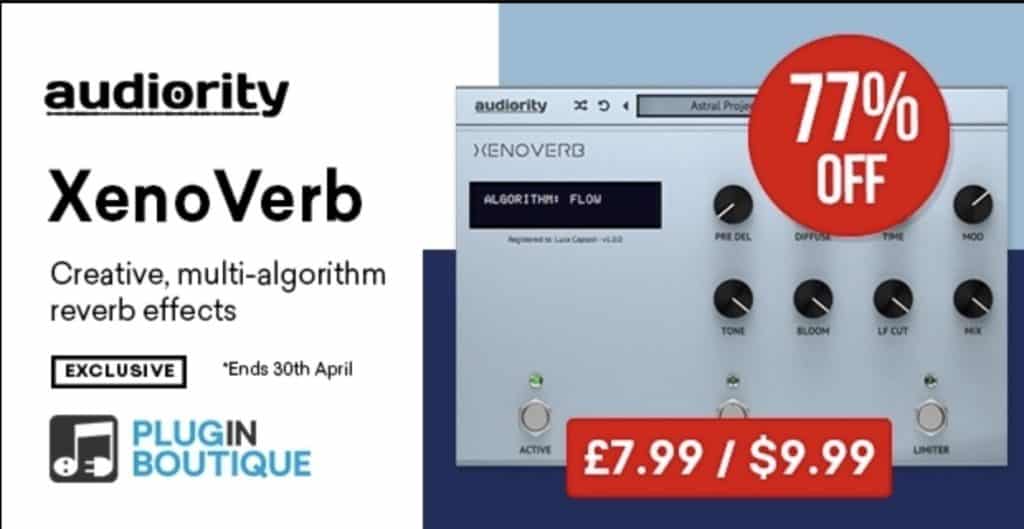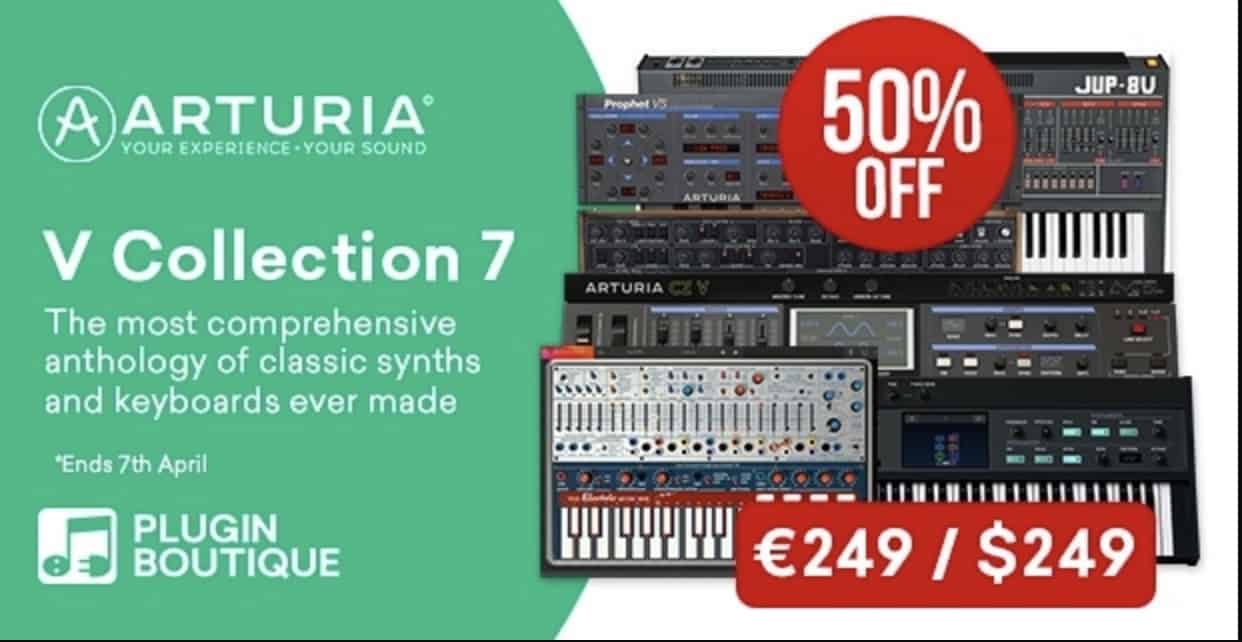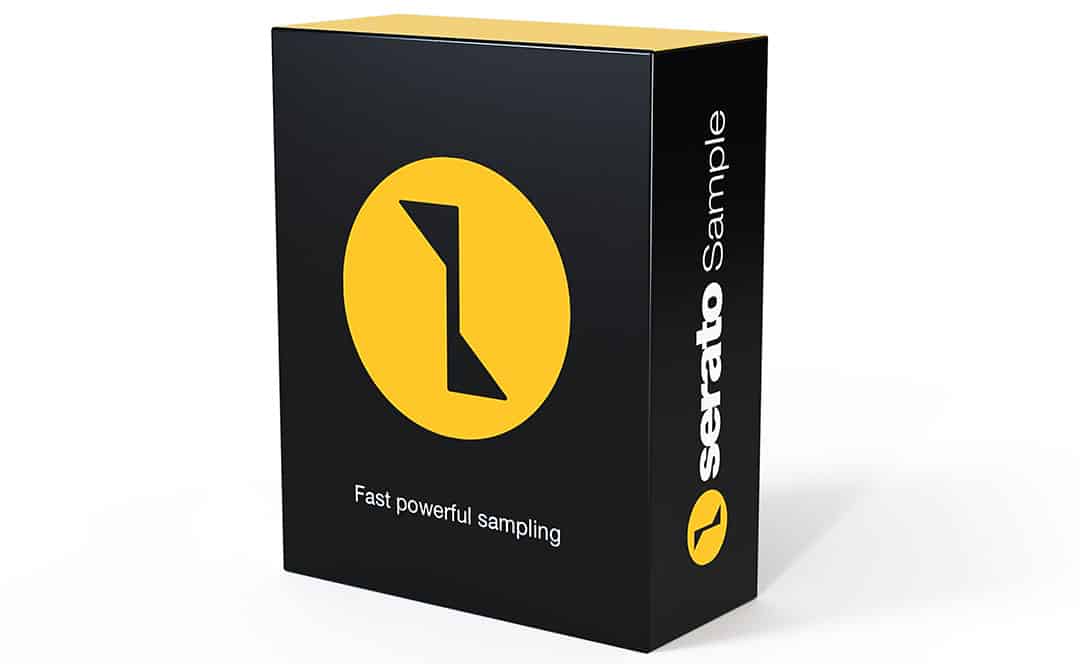Audiority XenoVerb Sale (Exclusive Plugin Boutique Sale)
XenoVerb (Affiliate Link) is a versatile reverb processor featuring both classic and creative reverb algorithms delivering a wide range of reverbs with a clean and simple interface.
Now available at a special discount at Plugin Boutique.

10 Reverb Algorithms
- ROOM: A flexible room algorithm useful to create classic environments ranging from small studios to large dancing clubs.
- HALL: A classic yet versatile hall reverb ranging from small concert venues to huge canyons. The smooth reflections and soft building tail are beautiful on pianos, drums and vocals.
- PLATE 1: A simplified version of a classic plate algorithm found in late ‘70s hardware processors.
- PLATE 2: An extended version of a classic plate algorithm found in late ‘70s hardware processors. Very smooth, great on vocals, drums and pads.
- SPRINGY: A fully algorithmic spring tank reverberator. Dirty, ringing and metallic, great on guitars and to add sparkle to synth and percussions.
- GLASS (FDN): A modern highly diffusive and transparent reverb. This versatile algorithm can be used on any source material and can range from small ambiences to outer world spaces.
- FLOW: A lush, smooth, hugely diffusive creative reverb based on the ‘90s hardware processors, where a lot of allpass blocks were used to create dense late reverberation. The result is a lush, soft building reverb, great for pads, guitars, voices and creative sound design.

- SHIMMER: A smooth reverb with a dual pitch shifter in a feedback loop creates an evolving harmonizing soundscape. That’s a classic effect pioneered by Eno, Lanois and U2’s The Edge.
- BODE: A weird sound design oriented algorithm made by placing a frequency shifter in the reverb feedback loop. Useful to create metallic resonances and drones.
- FORMANT: A creative reverb algorithm featuring a formant filter before the reverb tank.










